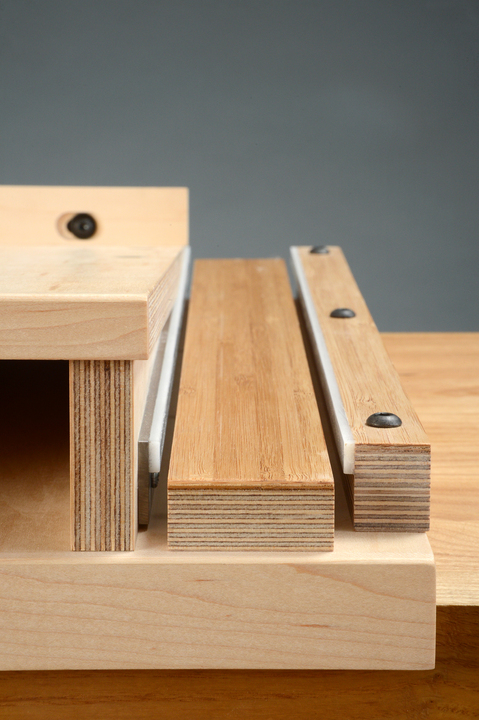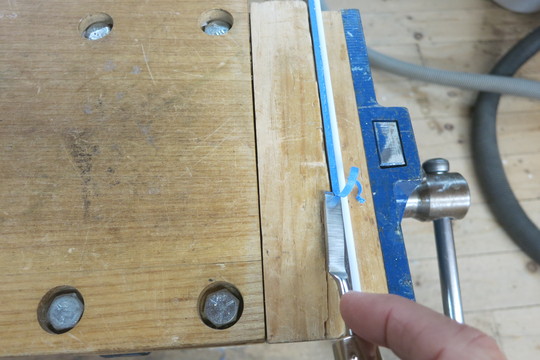Sometimes a tricky problem resolves after a few carefully thought out and tested steps. It then becomes “technique” and the original difficulty fades into distant memory.
When I redesigned the bearing strip on the Vogt Shooting Board the result called for a 1/8” x 3/8” strip of acetal to be positioned precisely on the upper edge of a tool steel plate that gets fastened to the ramped sidewall.
This process added considerable labor over the previous arrangement, but I knew the improvement was worth it. The challenge was to prevent the strip from sliding, which it wants to do while being pressed against the steel, and minimizing the time required to clean up the squeeze out of epoxy. Cleaning cured epoxy from steel is not my idea of a good time, or a profitable one.
The procedure that has come into service involves a masking technique and a positioning fixture.
First the area beneath the acetal gets taped and a scoring jig, with sandpaper underneath, is applied over it. It is sized so that, once the tape is pulled off, the exposed steel is the width of the acetal plus one human hair.
The top edge is then masked and trimmed.
This photo shows acetal strips in the upper section, masked steel in the middle, and completed pieces on the bottom.
The positioning fixture is a platform that allows two plates to be laminated at the same time. It has magnets underneath the length of the plates to hold them in position while the top edges are butted against a removable fence with a groove bridging the edge of the acetal and the masked top edge of the plate.
The epoxy can squeeze out into that space and onto the tape surfaces. Note also a rebated plywood caul used to clamp the acetal down and also, by cocking the spring clamp, pulling it tight against the fence.
After curing the pieces can be popped off:
and the fence removed. Bits of tape and epoxy can be pared or scraped away quickly.
Because the top edge was masked the two edges aren’t flush, but offset by the tape thickness. This is a benefit when chiseling off the cured epoxy/tape because it offers a shoulder for the chisel to ride against.
SOURCE: – Read entire story here.















